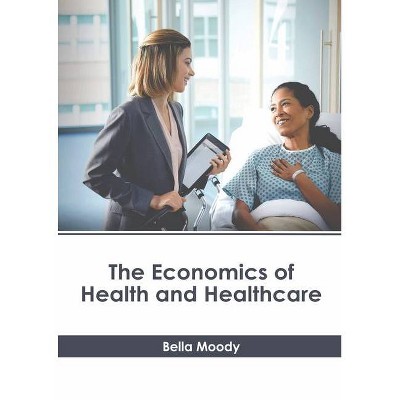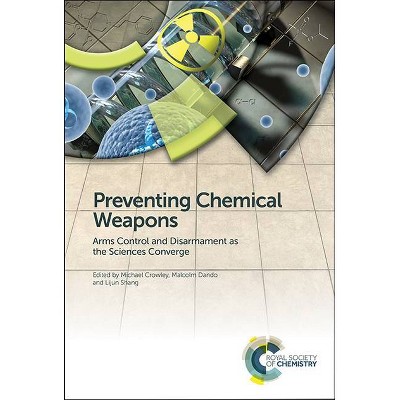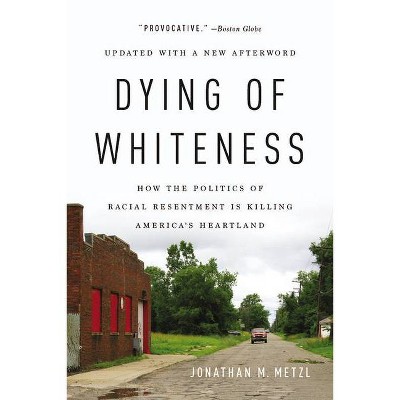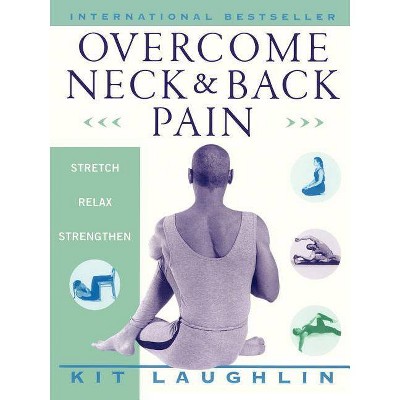Economics and Preventing Healthcare Acquired Infection - by Nicholas Graves & Kate Halton & William Jarvis (Hardcover)
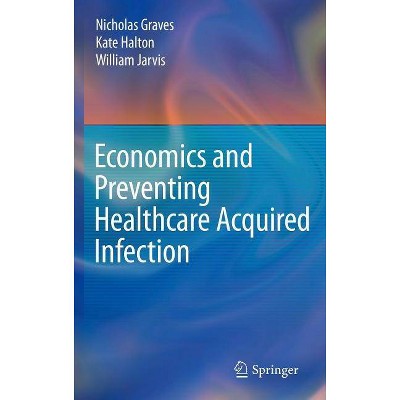
Similar Products
Products of same category from the store
AllProduct info
<p/><br></br><p><b> About the Book </b></p></br></br><p>As a rigorous analytic framework for dealing with this increasingly serious problem, this engagingly written work for the economics non-specialist brims with tables, charts, and case studies and lays out the economic concepts in clear, real-world terms.</p><p/><br></br><p><b> Book Synopsis </b></p></br></br>Acknowledgements.- Introduction.- Chapter 1. Economics.- A broad view of economics .- The building blocks of economics.- The concept of scarcity.- The concept of opportunity cost.- The concept of efficiency.- The concept of competitive markets.- The concept of market failure.- The concept of economic appraisal.- Conclusions.- Chapter 2. Health Economics.- Origins and content of health economics.- The parts of health economics most useful for infection-control.- Competing approaches to economic appraisal.- Welfarism.- Extra-welfarism.- Advantages and Disadvantages of each type of economic appraisal.- Conclusions.- Chapter 3. Economic appraisal: a general framework.- What an economic appraisal looks like.- Incremental Analysis .- Ceiling ratios and choosing health care programs.- Conclusions.- Chapter 4. Economic appraisal: the nuts and bolts.- Using a clinical trial versus a modeling study.- Economic appraisal alongside clinical trials.- Economic appraisal by modeling study.- Building a model .- Objective One - Define the structure of the model.- Objective Two - Find the evidence required to make the decision.- Objective Three - Evaluate the model that has been designed .- Objective Four - Account for heterogeneity & uncertainty.- Objective Five - Value future research .- Important features of an economic appraisal.- Conclusions.- Chapter 5. Changes arising from the adoption of infection control programs.- Overview of the major changes.- Changes to the number of infections.- Epidemiological studies.- Synthesizing existing evidence.- Conclusions.- Chapter 6 - Measuring the cost of Healthcare Acquired Infections.- Why data on the cost of HAI are useful.- Defining and measuring costs of HAI .- The cost accountant's method.- The economist's method.- Differences between the cost accounting and economicsmethods.- Estimating the increase in length of stay due to HAI .- Design approaches.- Statistical approaches.- Conclusions.- Chapter 7. Measuring the cost of implementing infection control programs.- Estimating the costs of Infection Control programs.- Two case studies for estimating the cost of infection control.- A case study of the costs of adopting antimicrobial catheters.- A case study of the costs of a staff education program.- Analyzing costs, inputs and outputs.- Incremental costs.- Average Costs.- Cost data and decision making.- Capital costs.- Conclusions.- Chapter 8. Preventing HAI and the health benefits that result .- Health benefits.- What QALYs are and how they are estimated.- Information required to estimate QALYs.- The risk of death due to infection.- The nature of the health states and the methods for finding utility scores that describe them.- Conclusions.- Chapter 9. Dissecting a published economic appraisal.- Economic evaluation in the infection control literature.- Case study of a decision to adopt antimicrobial central venous catheters.- Structuring the evaluation.- Evidence required for the evaluation.- Epidemiological parameters.- Effectiveness of antimicrobial CVCs.- Costs.- Health outcomes.- Evaluating the decision.- Handling uncertainty in the decision.- Parameter uncertainty.- Data quality.- Generalizability.- Interpreting the results for decision making.- Conclusions.- Chapter 10. Economic facts and the infection control environment.- The changing infection control environment .- The economic facts.- Diminishing returns.- Cost structures.- Lack of good information .- Incentives for bad behavior.- Conclusion.<p/><br></br><p><b> From the Back Cover </b></p></br></br><p>Economics and Preventing Healthcare Acquired Infection</p> <p></p> <p>Nicholas Graves, Kate Halton, and William Jarvis</p> <p></p> <p> </p> <p>The evolution of organisms that cause healthcare acquired infections (HAI) puts extra stress on hospitals already struggling with rising costs and demands for greater productivity and cost containment. Infection control can save scarce resources, lives, and possibly a facility's reputation, but statistics and epidemiology are not always sufficient to make the case for the added expense. <em>Economics and Preventing Healthcare Acquired Infection</em> presents a rigorous analytic framework for dealing with this increasingly serious problem.</p> <p></p> <p>Engagingly written for the economics non-specialist, and brimming with tables, charts, and case examples, the book lays out the concepts of economic analysis in clear, real-world terms so that infection control professionals or infection preventionists will gain competence in developing analyses of their own, and be confident in the arguments they present to decision-makers. The authors: </p> <p></p> <ul> <p> <li>Ground the reader in the basic principles and language of economics.</li> <p></p> <p> <li>Explain the role of health economists in general and in terms of infection prevention and control.</li> <p></p> <p> <li>Introduce the concept of economic appraisal, showing how to frame the problem, evaluate and use data, and account for uncertainty.</li> <p></p> <p> <li>Review methods of estimating and interpreting the costs and health benefits of HAI control programs and prevention methods. </li> <p></p> <p> <li>Walk the reader through a published economic appraisal of an infection reduction program.</li> <p></p> <p> <li>Identify current and emerging applications of economics in infection control.</li> <p></p></ul> <p></p> <p><em>Economics and Preventing Healthcare Acquired Infection</em> is a unique resource for practitioners and researchers in infection prevention, control and healthcare economics. It offers valuable alternate perspective for professionals in health services research, healthcare epidemiology, healthcare management, and hospital administration.</p><p/><br></br><p><b> Review Quotes </b></p></br></br><br><p>From the reviews: </p> <p></p> <p>"This book on the cost of healthcare-associated infectious is written from an economic rather than an accounting perspective, a difference that is explained in detail ... . It is written for infection-control personnel and infectious disease practitioners with no prior knowledge of economics. ... Graduate and professional students and researchers in health-related fields with an interest in healthcare epidemiology may find this book a helpful introduction. ... it is easy to read and clearly organized." (Linnea A. Polgreen, Doody's Review Service, August, 2009)</p><br><p/><br></br><p><b> About the Author </b></p></br></br><p>Nicholas Graves is a Senior Research Fellow in Health Economics at the School of Public Health, Queensland University of Technology. He is also a Senior Lecturer in the Department of Infectious Diseases at the Princess Alexandra Hospital, Australia.</p> <p>William Jarvis is a well-known figure in infection control. He was formerly Chief of the Epidemiology Branch at the CDC, as well as Director of the Hospital Infections Program at the CDC. He is a past President of The Society for Healthcare Epidemiologists of America (SHEA), and is currently Vice-President of the Association for Professionals in Infection Control (APIC). </p> <p> </p>
Price History
Price Archive shows prices from various stores, lets you see history and find the cheapest. There is no actual sale on the website. For all support, inquiry and suggestion messagescommunication@pricearchive.us
